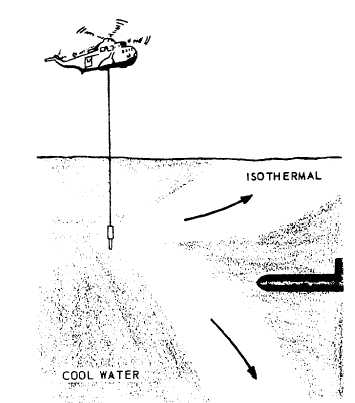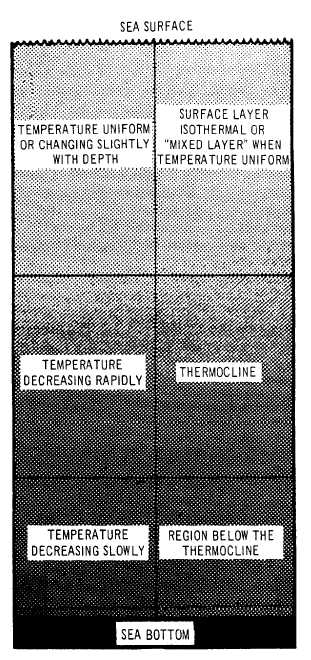thermal gradient condition, the layer depth is the
depth of maximum temperature. Above layer depth,
the temperature may be uniform, or a weak positive or
negative gradient may be present.
Layer effect is the partial protection from echo
ranging and listening detection, which a submarine
gains when it submerges below layer depth. Reports
from surface vessels indicate that effective ranges on
submarines are greatly reduced when the submarine
dives below a thermocline, and that the echoes
received are often weak and sound “mushy.”
Figure 4-4.-Isothermal conditions.
(constant temperature). Refer to figure 4-4 as you
read the following text. The surface layer of water in
the figure is isothermal, but beneath this layer the
temperature decreases with depth. This causes the
sound beam to split and bend upward in the
isothermal layer and downward below it.
Remember, when no temperature difference
exists, the sound beam refracts upward due to
pressure. When the temperature changes with depth,
the sound beam bends away from the warmer water.
Under normal conditions the sea’s temperature
structure is similar to that shown in figure 4-5. This
structure consists of three layers as follows:
1. A surface layer of varying thickness with
uniform temperature (isothermal) or a relatively slight
temperature gradient.
2. The thermocline, which is a region of
relatively rapid decrease in temperature.
3. The rest of the ocean, with slowly decreasing
temperature down to the sea floor.
If this arrangement changes, the path of the sound
beam through the water will change.
Layer depth is the depth from the surface to the
top of a sharp negative gradient. Under positive
Figure 4-5.-Normal sea temperature structure.
4-5



